Antarctica is one of the most extreme destinations in the world. It’s the coldest, driest, windiest, and has the highest average altitude (believe it or not, the average elevation on the continent is about 7,200 feet or 2,200 meters above sea level).
*This post may contain affiliate links, as a result, we may receive a small commission (at no extra cost to you) on any bookings/purchases you make through the links in this post. As an Amazon Associate, we earn from qualifying purchases. Read our full disclosure
But extreme conditions also promise extreme adventure—there’s so much to do and see in Antarctica! Take it from us: visiting Antarctica is absolutely worth it!
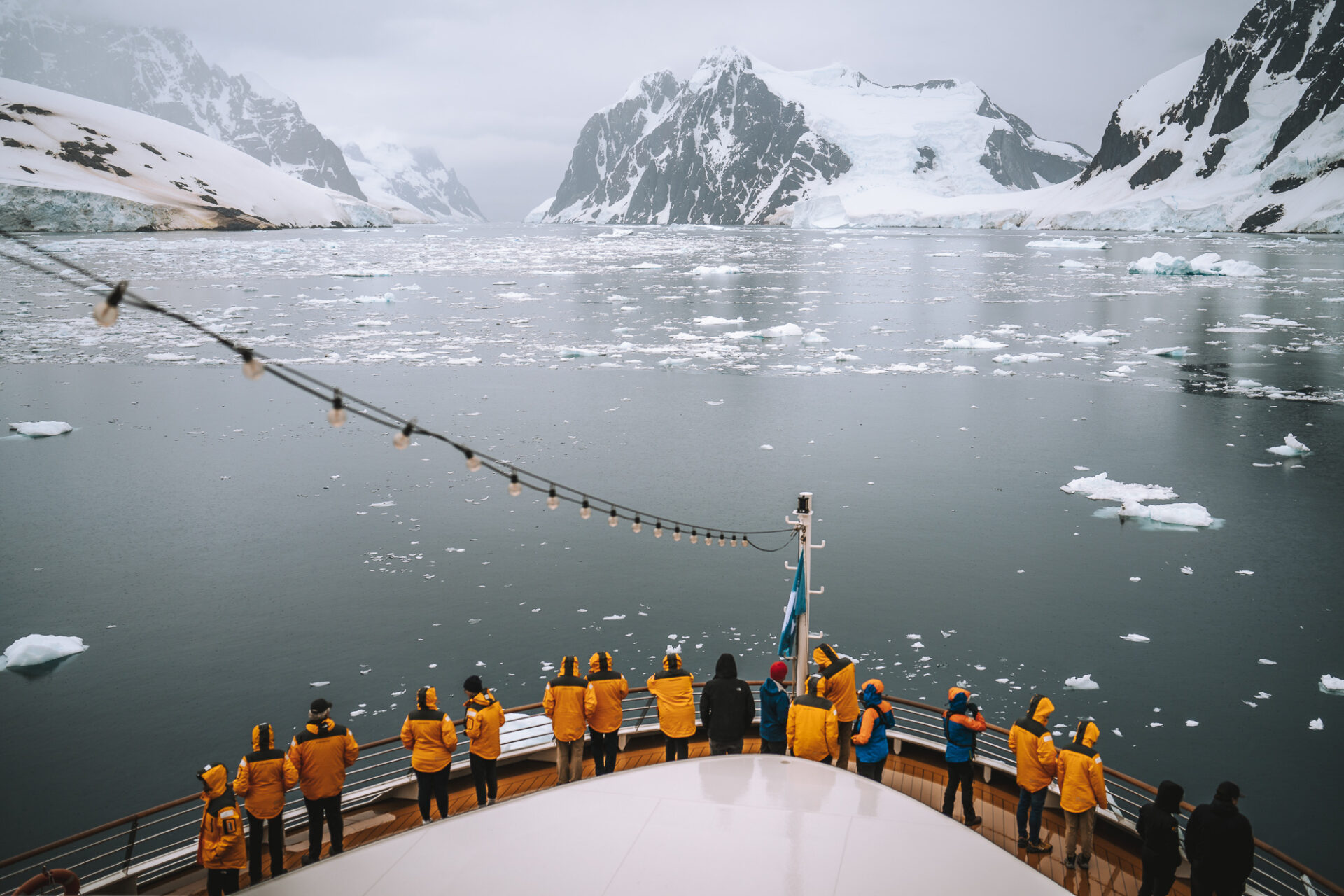
Traveling Soon? Here is a list of our favourite travel providers and accessories to help get you ready for your upcoming trip!
As everyone knows, the Antarctic Peninsula isn’t the easiest to get to. It’s the least explored continent for a reason, after all. But with proper planning and the help of knowledgeable tour operators, it’s possible to navigate Antarctica’s delicate environment safely and have the best time doing so.
Wondering when the best time to visit Antarctica is? Here, we’ll share everything we learned from our visit to the Antarctic Peninsula and give you a month-by-month overview of what to expect.
Hopefully this will help you determine the best time to visit Antarctica for YOU!
Seasons in Antarctica: Summer and Winter
The white continent of Antarctica has only two seasons: summer and winter. Summer starts in late October and lasts until March, while winter starts in March and lasts until October.
The short Antarctic cruise season happens over the summer, as the winter months are generally a no-go for Antarctic cruises.
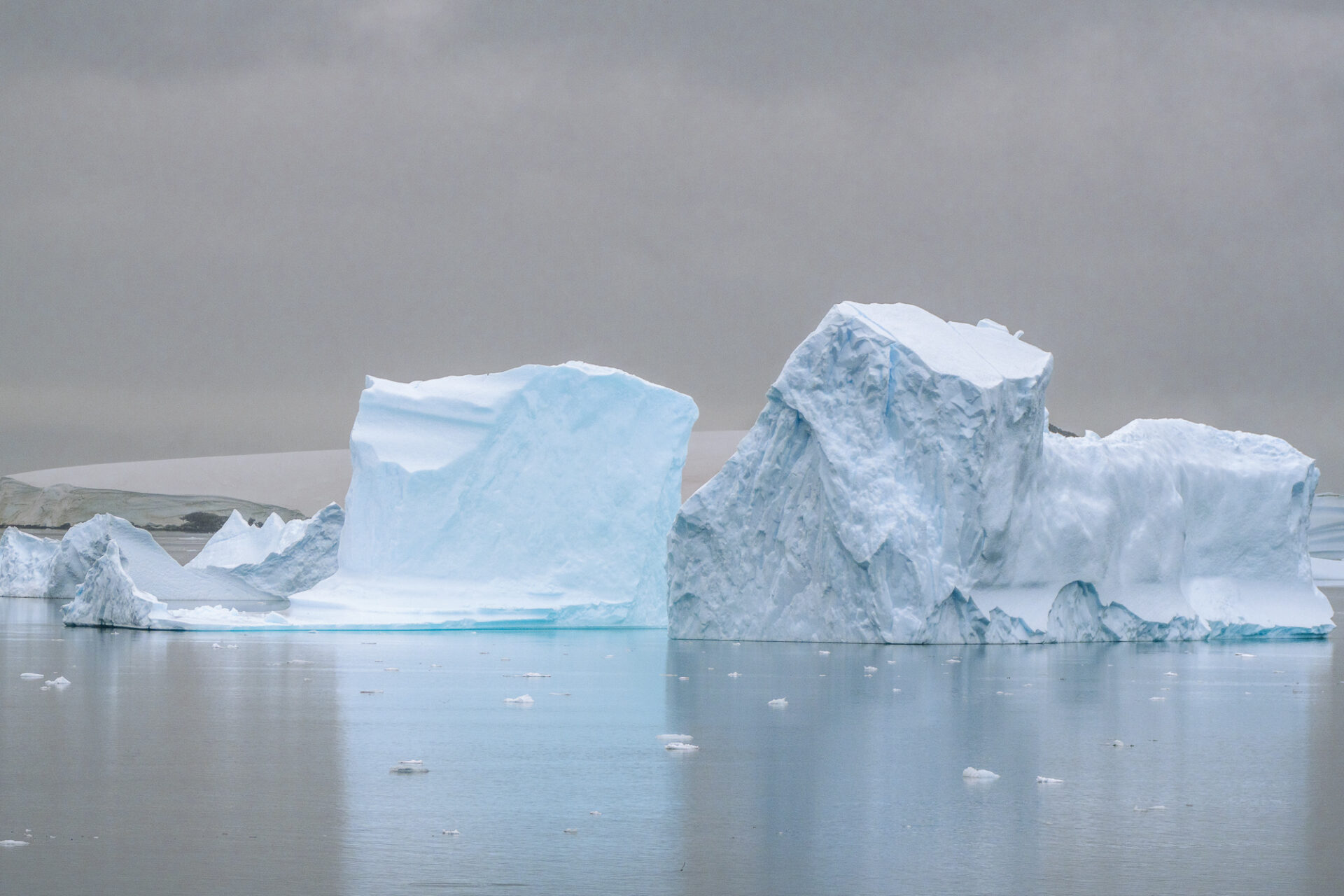
Summer in Antarctica (Late October-March)
The austral summer is the best time to visit Antarctica. You’ll see the most pristine snowy landscapes at the start of the Southern Hemisphere’s summer months when ice formations are untouched, and the snow is white and magical.
With the summer sun comes melting ice, which leads to more food for fish, penguins, seals, and sea birds. Abundant wildlife is everywhere in Antarctica during the summer, and it’s exciting to explore the landscape and witness them in their natural habitat.
It’s also as warm as it gets in Antarctica. During the hottest months of January and February, the warm temperatures are somewhere above 0°C (32°F).
Daylight hours are also at their longest, which means more time for Antarctic adventures and excursions.

Winter in Antarctica (March to October)
The frozen continent lives up to its name, especially in the winter months. Temperatures regularly hit -50°C (-58°F). It’s dark all day long, the sea freezes over, and most of the continent is off-limits to visitors since the sea ice makes it unpassable.
As nice as it would be to witness the Southern lights or Aurora Australis in the winter, no cruise ship operators run expeditions during winter in Antarctica.
The only people who visit Antarctica during the winter months are researchers and those with special permissions. Winter expeditions have specific purposes outside of travel or leisure, such as wildlife photographers documenting Emperor penguins, or scientists who have bases there.
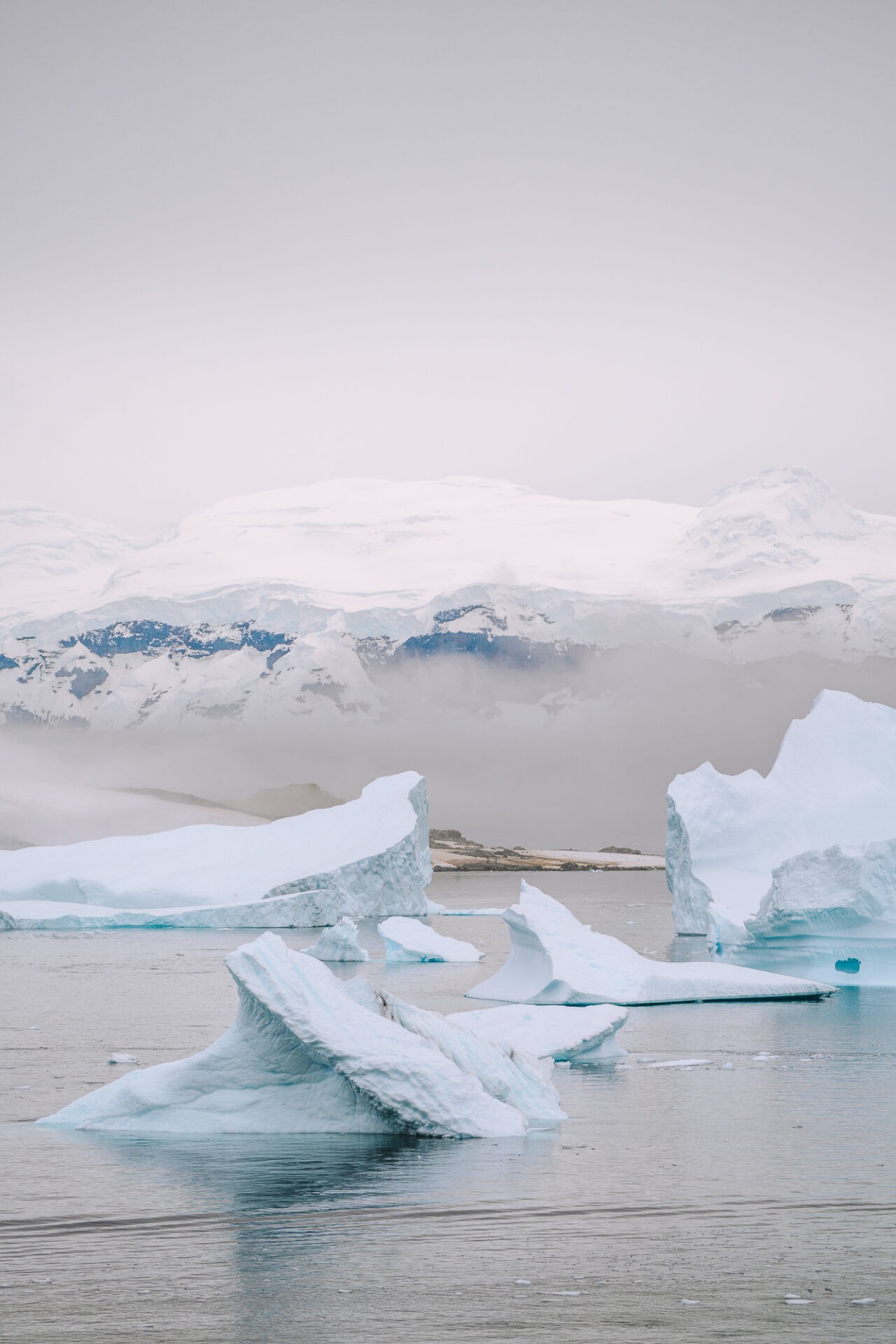

Main Antarctica Season: November to March
Now that we’ve identified the few months when leisure travel to Antarctica is possible let’s cover the season in greater detail.
Before our trip to Antarctica, we had no idea the wildlife and scenery varied so much from month to month, so we hope you’ll find this information equally helpful!
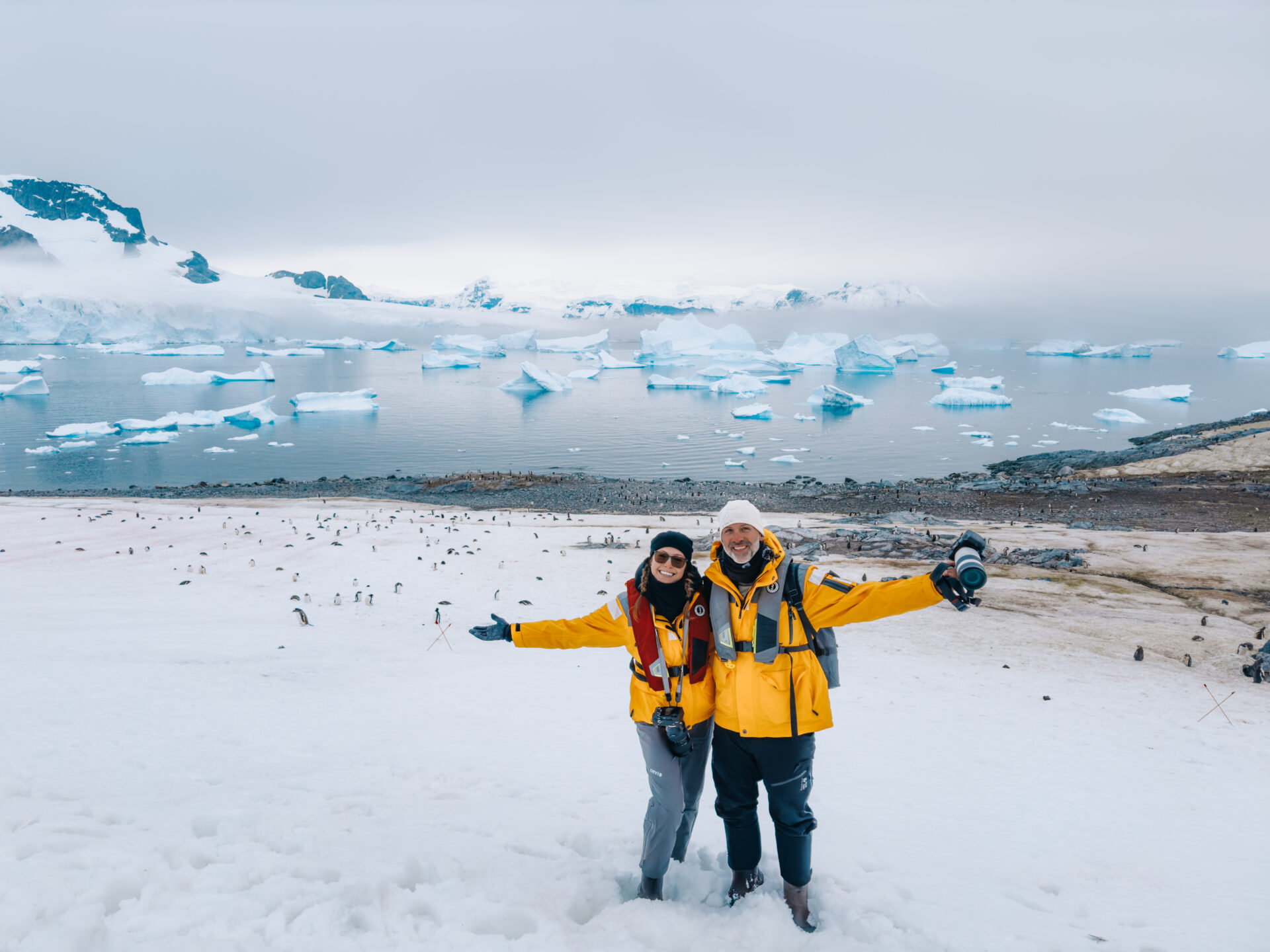
November
What to Expect: abundant sea ice, colder temperatures
Go For: penguins nesting, fur seals mating
The beginning of the Antarctic expedition season means you’ll be among the first to step foot on the frozen continent after a long winter. If you want to visit Antarctica for the snowy scenery, this is a good month to do so. The early season in November gives you the best chance to get close to some of the bigger icebergs and walkable pack ice.
But while more ice means more pristine landscapes, too much ice can pose a slight problem. As our guide explained, some landings in November may be cancelled if it’s too difficult to navigate through the sea ice. Safety is the number one priority, and if ice blocks are too big, the expedition team will be forced to re-route the ship. Sometimes, ice may make it impossible to disembark altogether, meaning that you’ll have to observe the sights and wildlife from the deck.
On a more positive note – the mating season is in full swing in November. You might see aggressive mating rituals from fur seals or elephant seals, or catch penguins arriving at their breeding colonies. Adélie penguins, gentoo penguins, and chinstrap penguins will be very busy nesting by then.
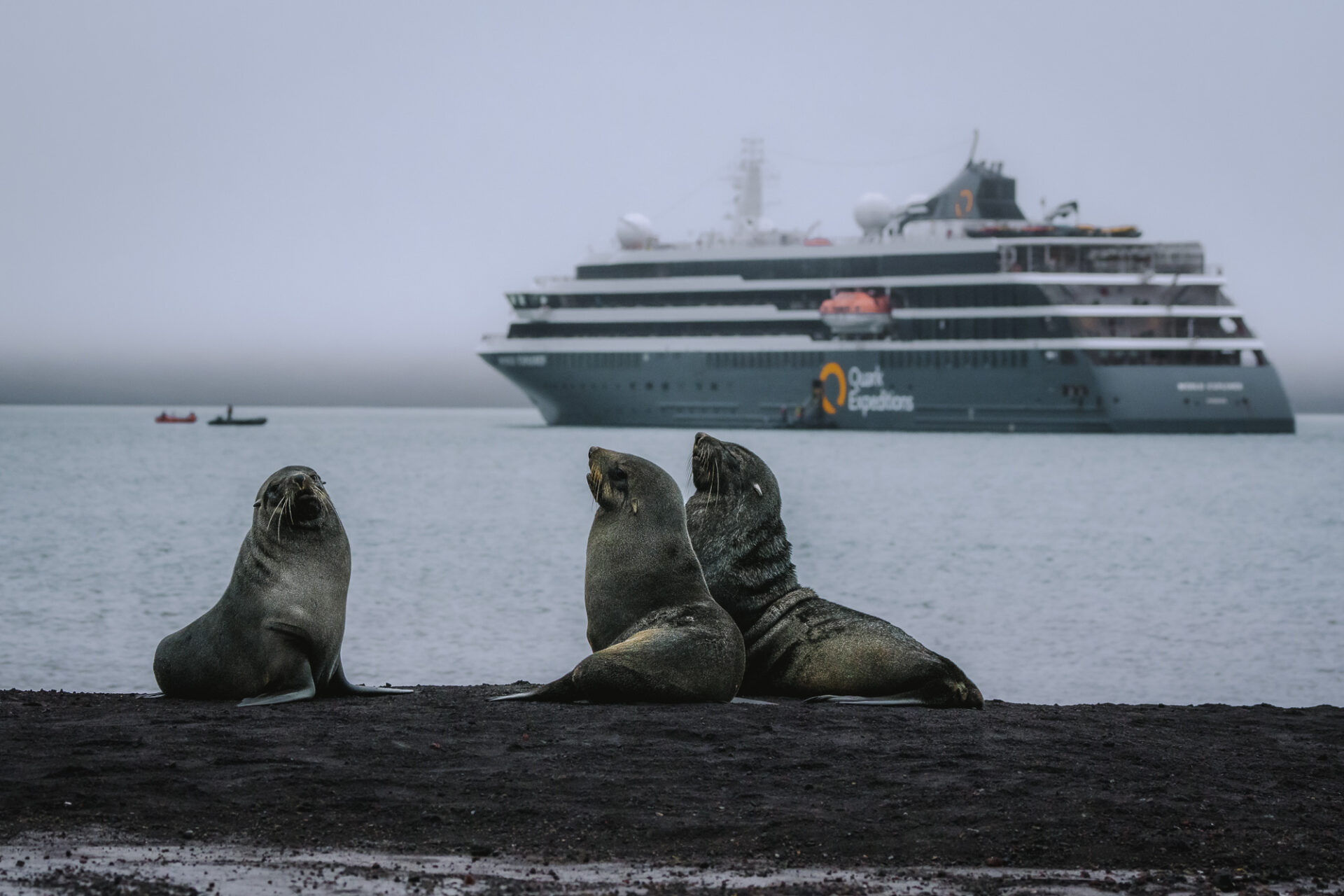

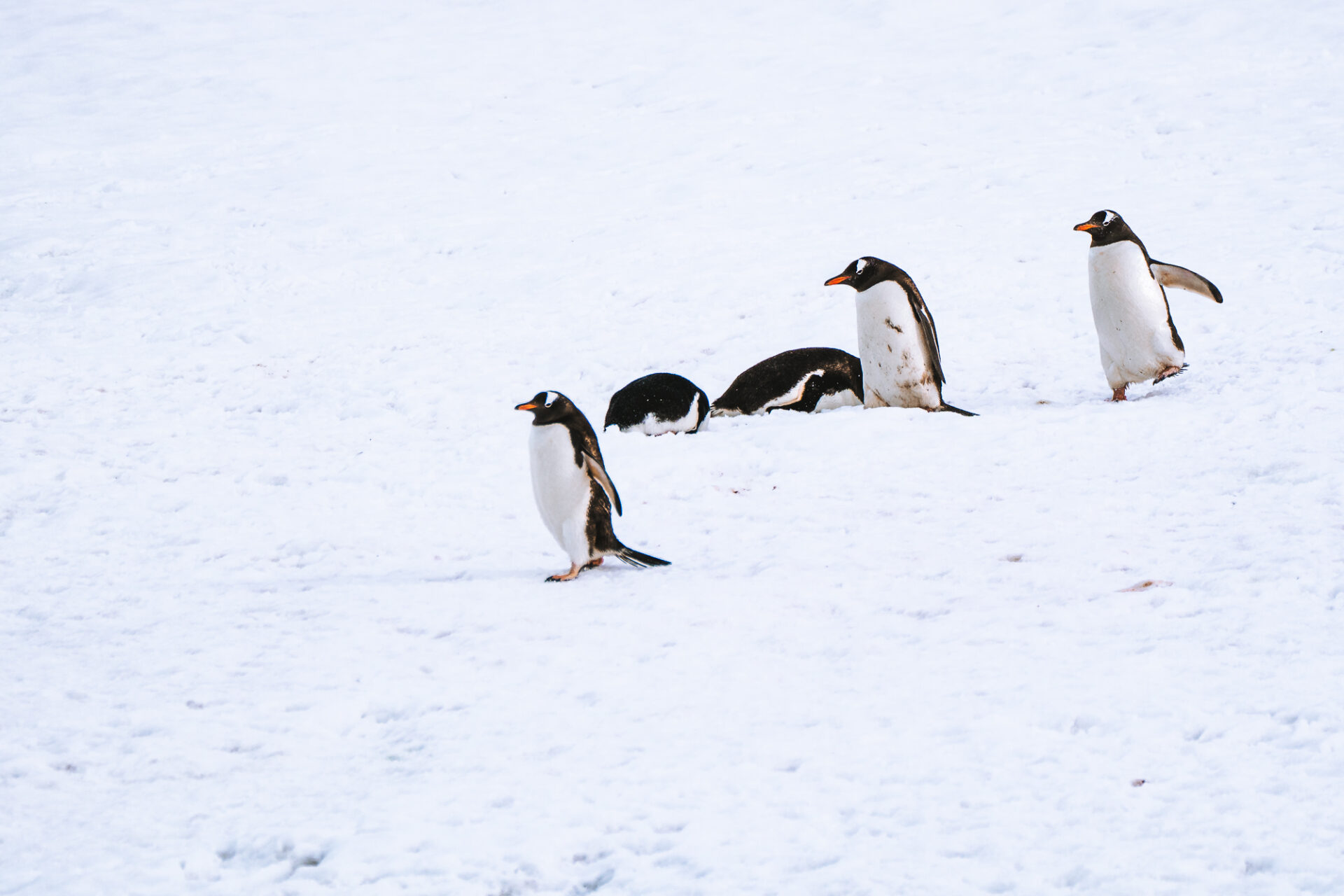

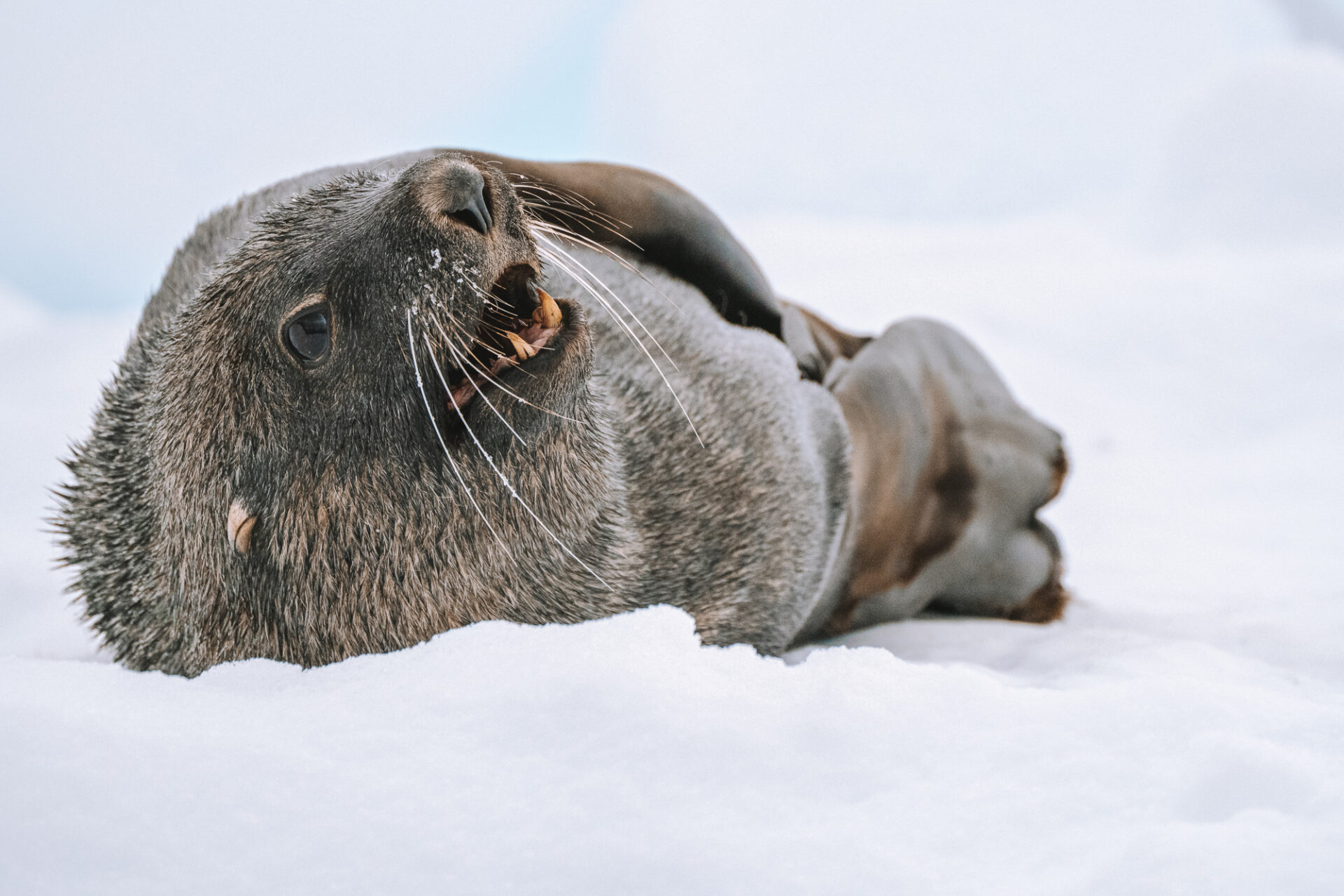
December
What to Expect: 24 hours of sunlight and warmer temperatures
Go For: abundant wildlife
December gets warmer as Antarctica enters the peak season of the summer months. The daylight hours are the longest during this month, with nearly 24 hours of sunlight. Summer solstice and midnight sun mean you can squeeze in extra time outdoors. With cruise ships and zodiacs getting better access to beaches and peninsulas, it’s prime time for nature photography, wildlife viewing, and shore excursions.
Meanwhile, wildlife gets more exciting as whales arrive to feed in warmer waters. Baleen and toothed whale sightings increase along the Antarctic Peninsula, and humpback whales finally arrive after a long migration.
As December progresses, penguin chicks start to hatch. They start on the Falkland Islands in early December, and along the Antarctic Peninsula towards the end of the month. As baby penguins grow during the season, parent penguins work hard to keep them fed. You might see the parents reach the shore bringing fish, much to the frenzied delight of a thousand fluffy penguin chicks.
Seal pups are a common sight on the beaches of wildlife-rich South Georgia Island, and crabeater seals say hello and haul themselves onto ice floes.
The airstrip on King George Island also opens in December. That means that tourists who don’t want to pass through the Drake Passage can now fly over it, as long as the weather permits.

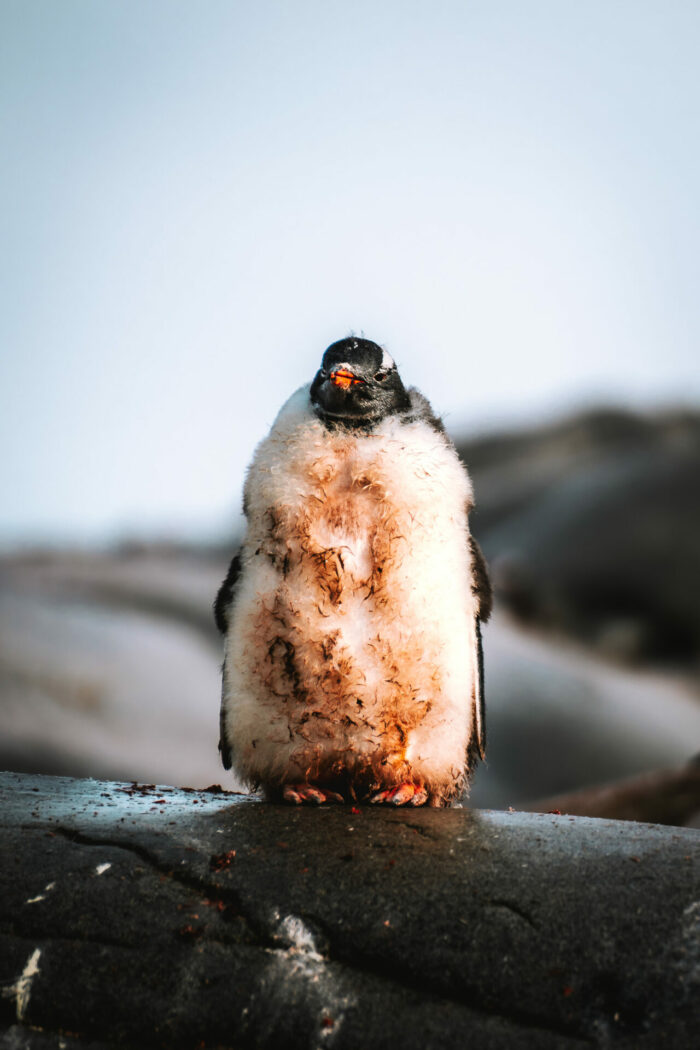
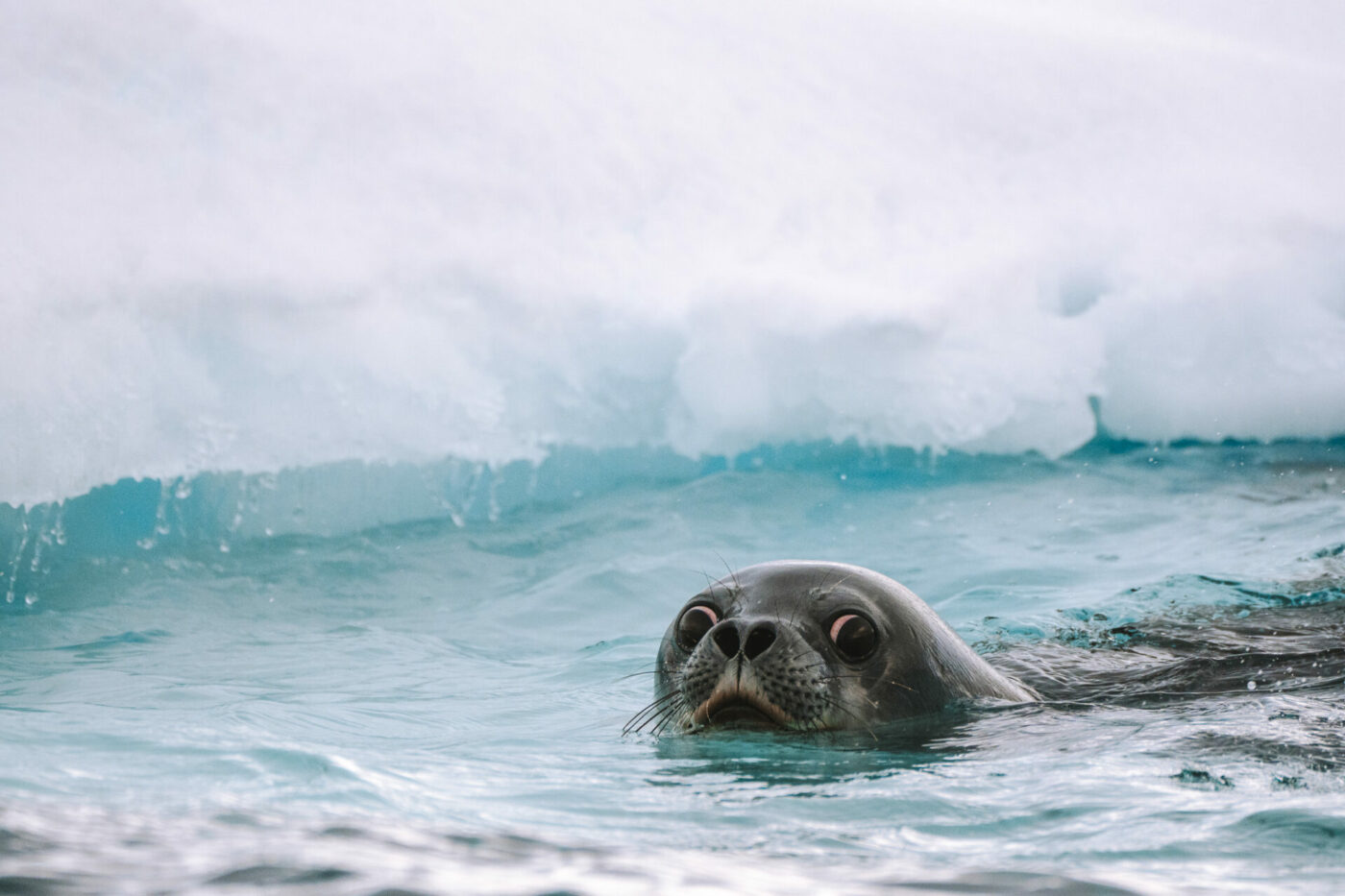


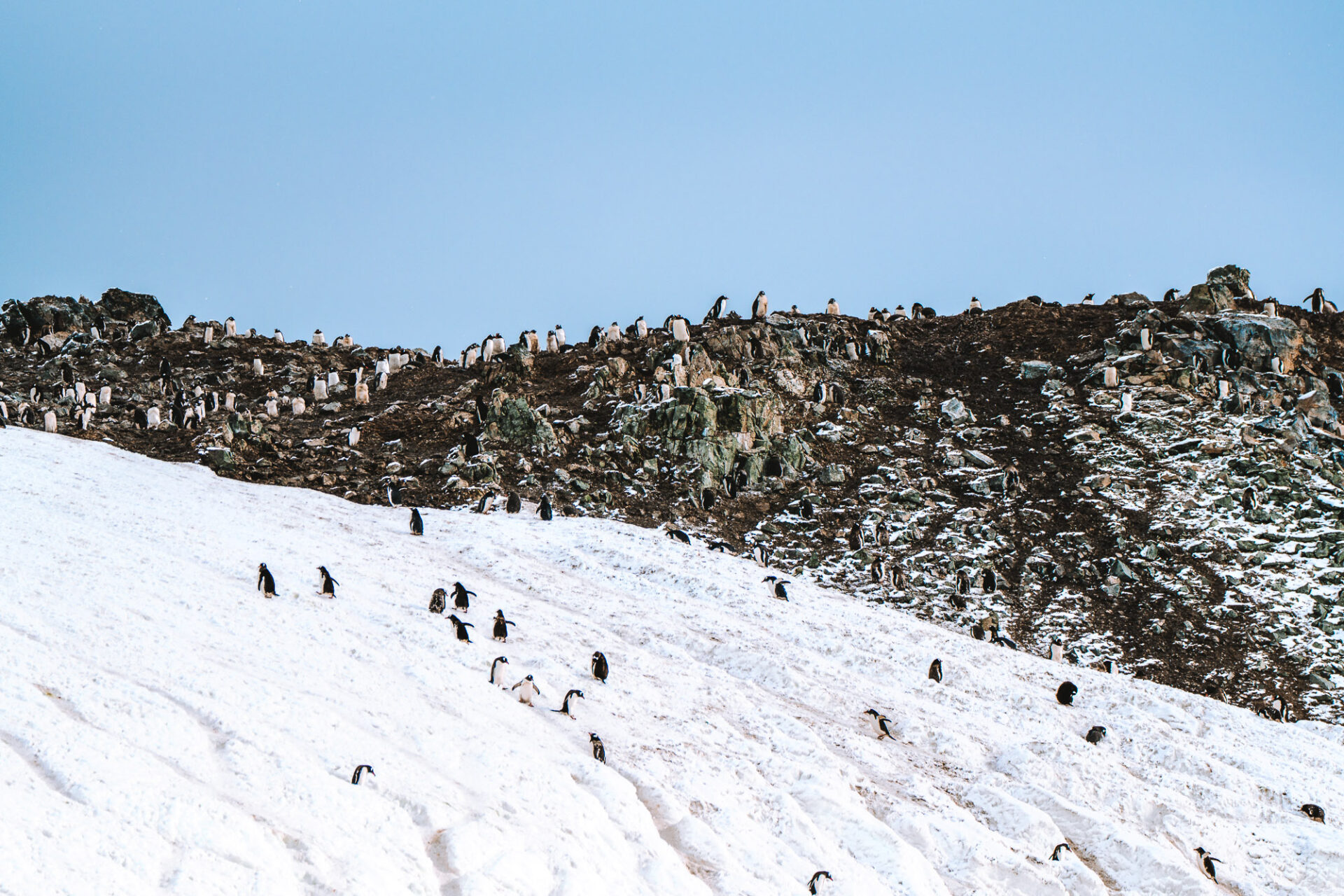
January
What to Expect: warmest weather, calmer seas
Go For: penguin chicks, seal pups, whale watching, land expeditions
Early January brings calmer seas and warmer temperatures. Sometimes, daytime temperatures exceed 10°C (50°F) on the Antarctic Peninsula. The Antarctic summer sun provides over 20 hours of daylight, which means more time for wildlife viewing, excursions, and photography. As our guide said, it’s the best time to visit Antarctica because you get to see a little bit of everything.
Wildlife enthusiasts will particularly enjoy this month, too. Fluffy penguin chicks are at their cutest, and the remote Emperor Penguin colonies are more accessible. If your Antarctica itinerary includes a visit to South Georgia Island, you’ll see plenty of wildlife. King penguins, gentoo penguins, macaroni penguins, and chinstrap penguins are commonly spotted on the island.
Meanwhile, newborn seal pups can be spotted on the Falkland Islands and South Georgia. It’s great time for whale watching, too. Humpback whales and even orcas are seen feeding in Antarctic waters.
January is also the month when land expeditions are doable, as the sea ice breaks apart in eastern Antarctica. This makes rare voyages to the Ross Sea possible, where you can visit the remote huts of Captains Scott and Shackleton.
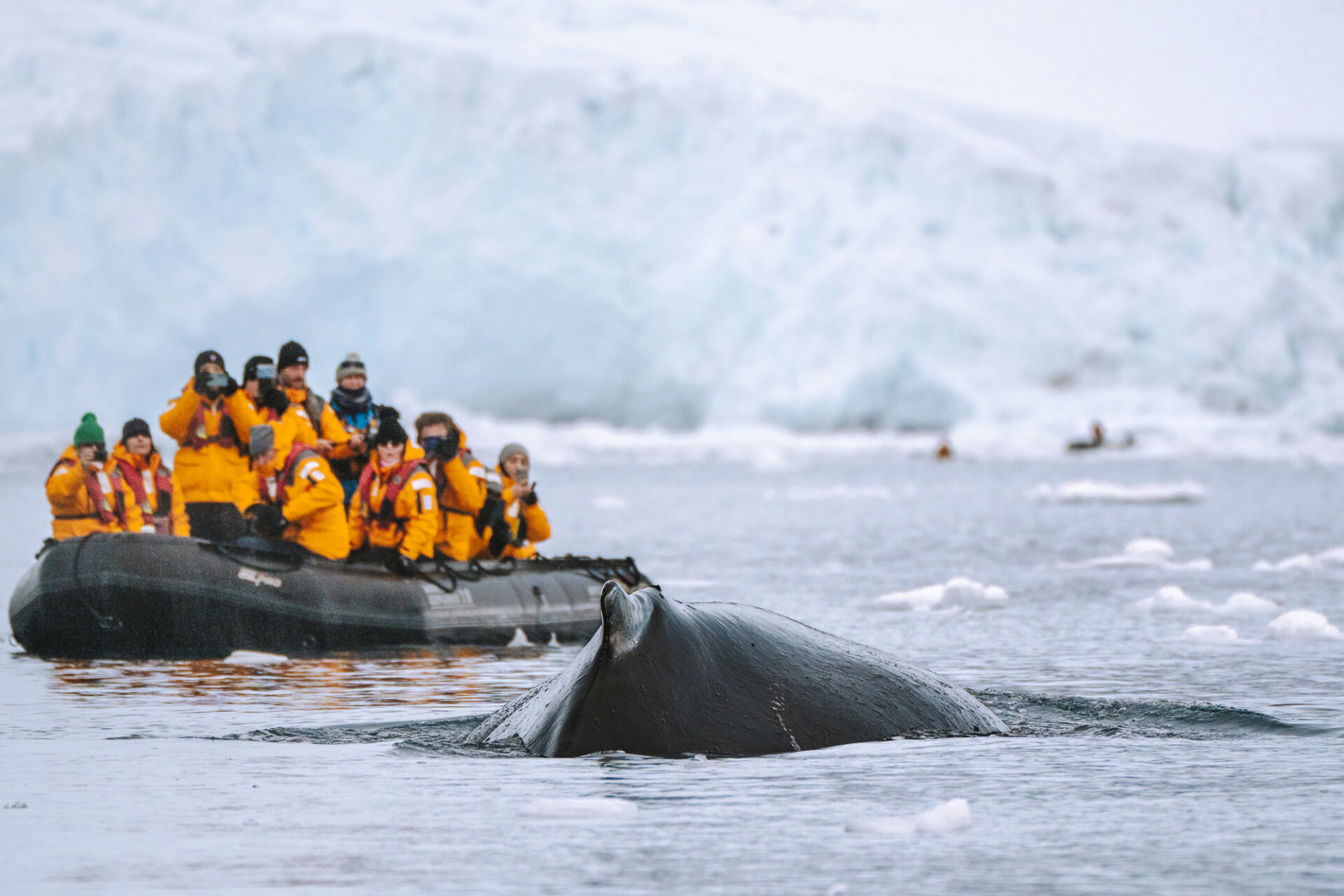
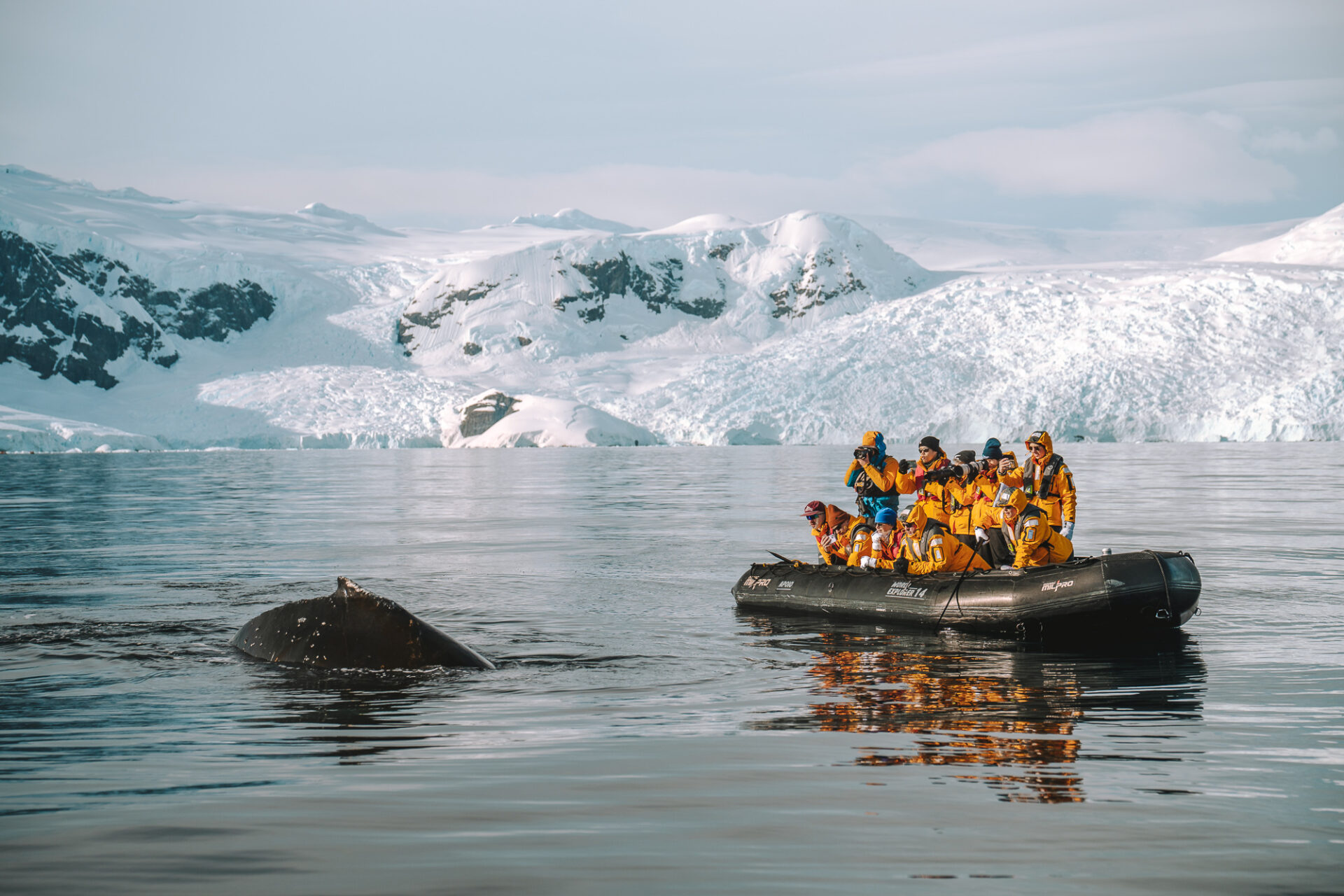
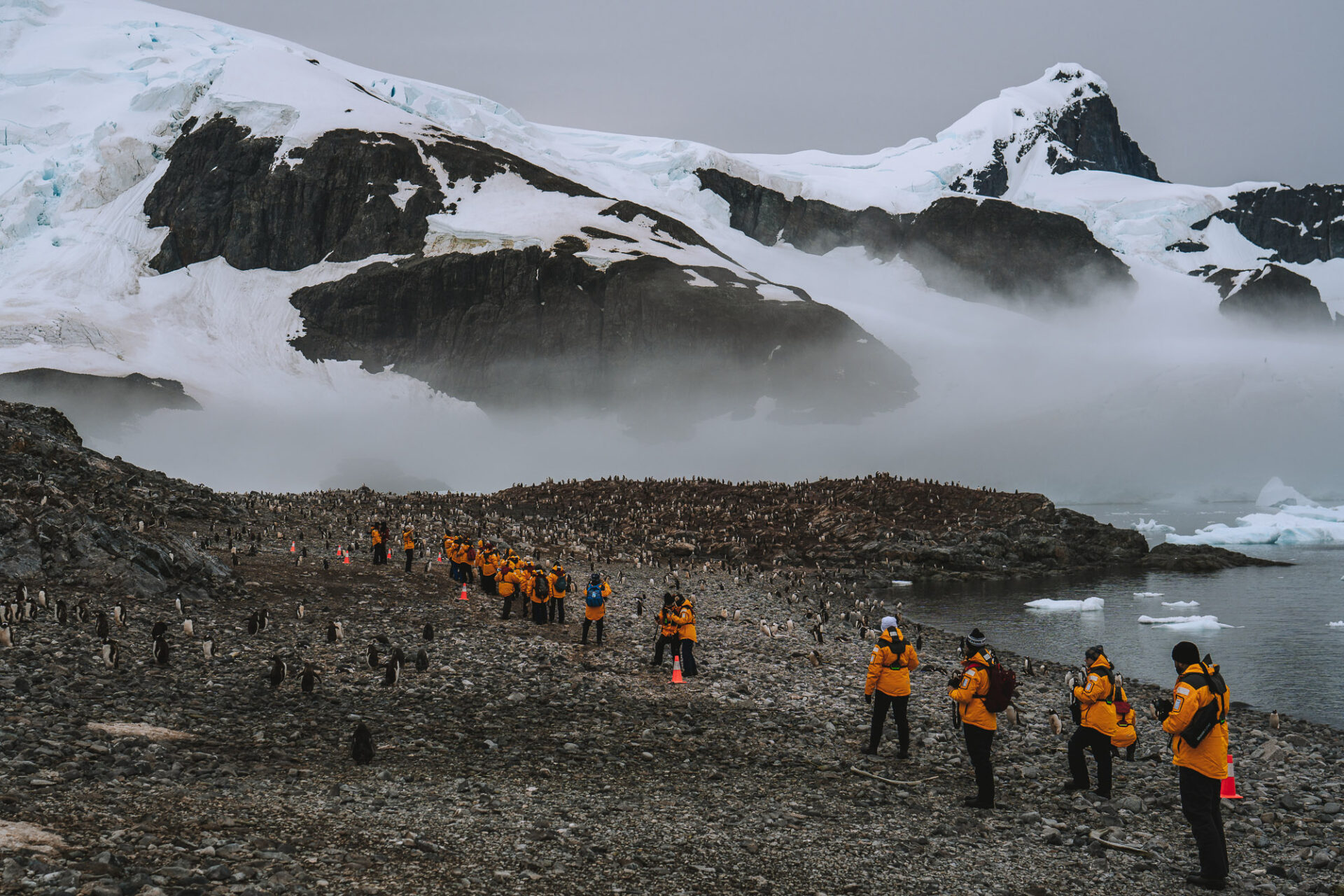
February
What to Expect: whales and warmer temperatures
Go For: whales, penguin chicks and adult penguin sightings
February is considered the best time to visit Antarctica for whale watching. Minke whales and humpback whales are particularly known for their curiosity. If you’re lucky, you might just hear them sing or even catch the whales breaching!
Penguin chicks are at their most active in February. If they’re not chasing their parents around for food, they’re learning how to swim and making their first dive into Antarctic waters. Penguin parents are busy diving in and out of the water for food, drawing the attention of hungry leopard seals. Sometimes, orcas come out to hunt, too!
Sea birds are still around during this month, but not for long. Whales and seals start preparing for migration, too. The weather starts to cool as the month progresses, and there are generally fewer tourists and cruise ships that visit Antarctica.
As sea ice retreats to its maximum level, all itineraries open up. Less sea ice means the chance to cross the Polar Circle and explore the Ross Sea, South Shetland Islands, Weddell Sea, and other East Antarctica voyages. These voyages are very limited, as the Ross Sea is closed in by pack ice conditions for the rest of the year.
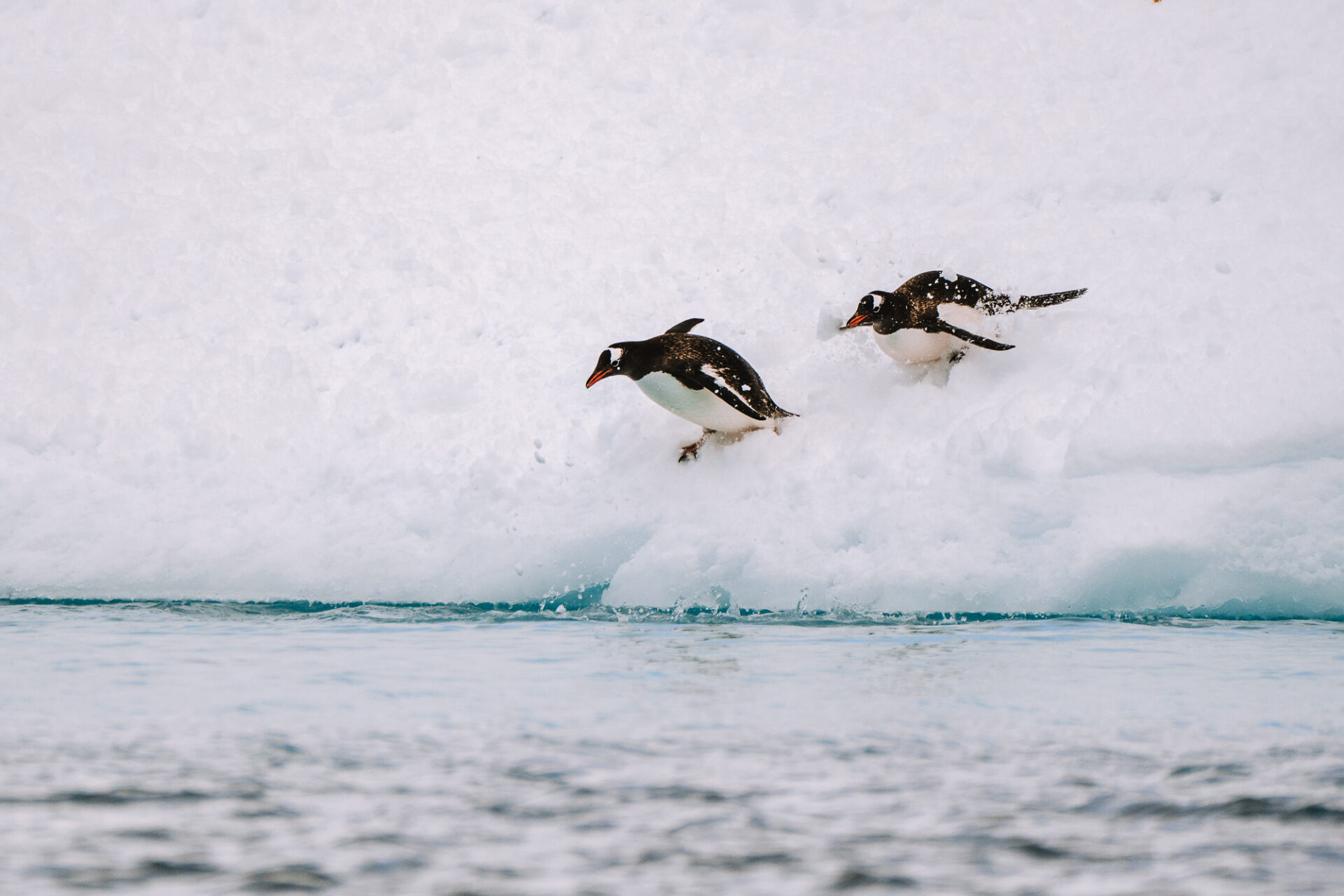

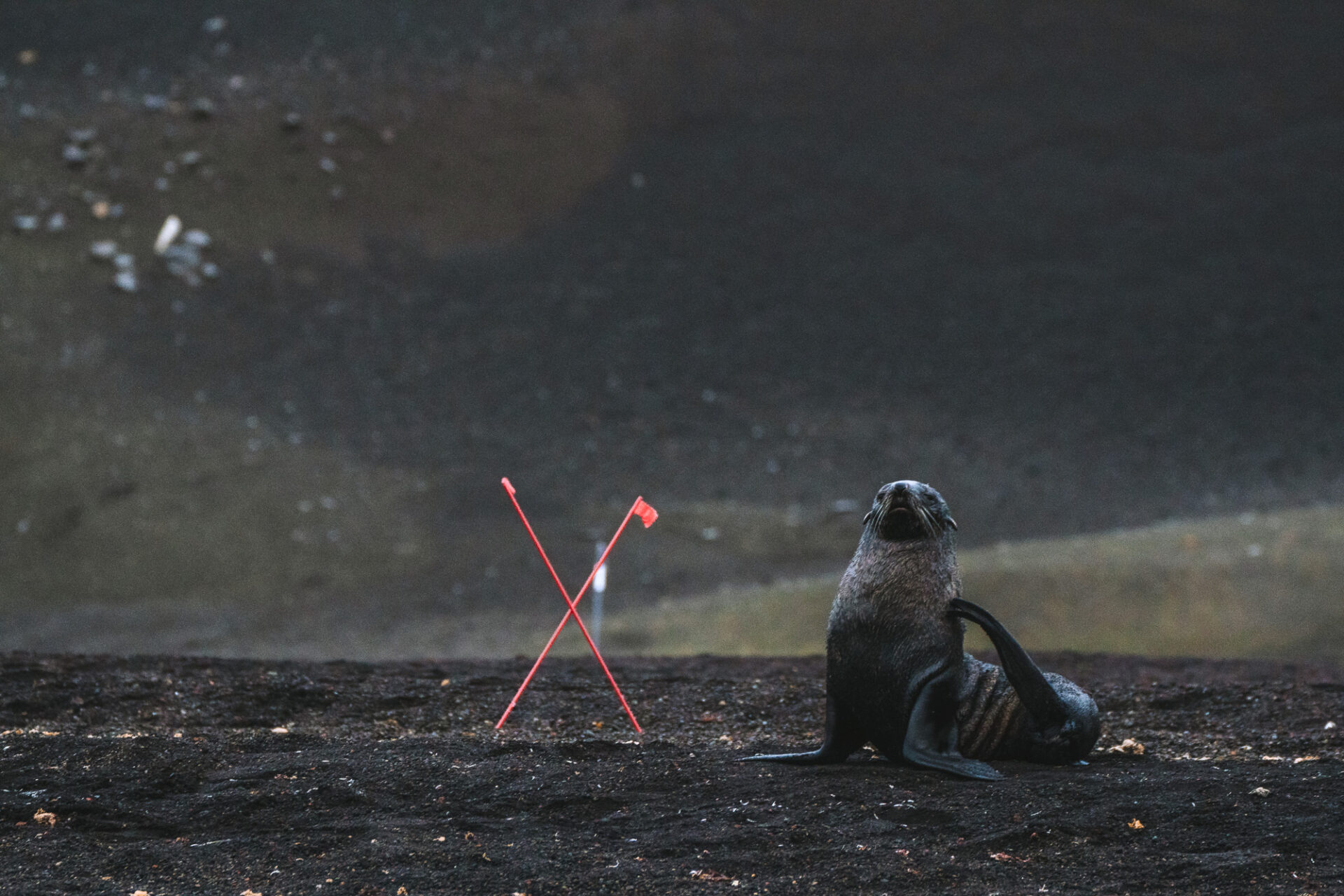
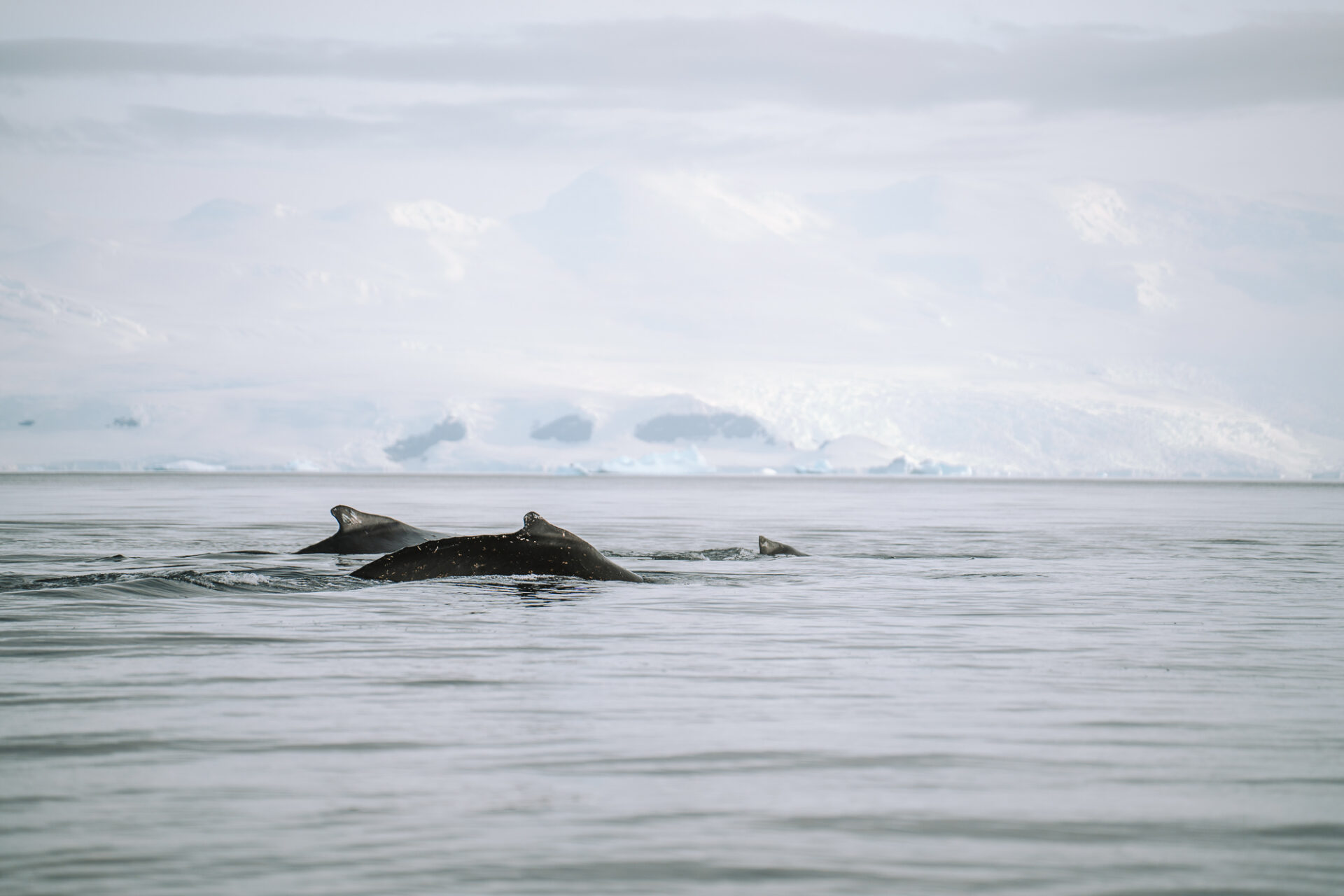
March
What to Expect: fewer tourists, cheaper prices
Go For: whale-watching, young Penguins and fur seals, plus spectacular sunsets
March signals the end of the Antarctic summer. Before long, the temperatures will start to return to their below-freezing conditions, and most visitors and cruise ships will say goodbye to the continent. March is often the cheapest time to visit Antarctica.
It’s the last chance for whale-watching, as they will soon head back to warmer waters. By this time, the whales would’ve had their fill of krill. No longer hungry, they’re mostly curious enough to approach kayaks and zodiacs.
Meanwhile, the baby penguins have grown to be a bit braver. They’re a playful bunch too, and can even come up to humans along the shore!
While the scenery is still beautiful in March, there is one disadvantage – penguin colonies are dirty. There’s no white snow left, it’s very muddy, and penguin poop is everywhere. You might even smell it before you see it! As our guide said, when you see penguin poop everywhere, that’s how you know it’s the end of the season. Leopard seals are also in action come March, out to hunt the penguins during this time.
Young fur seals, who are like the puppies of the Arctic waters, tend to be quite friendly. They’re great in front of the camera, too!
By this time, fewer boats are around, making for a peaceful voyage across the Polar Circle. It’s easier now to get through the melted areas of the Antarctic Circle, all the way to the southernmost point.
With the sun low in the sky, March sees some of the most spectacular sunsets. The fierce colours are absolutely beautiful and a perfect way to close the season.
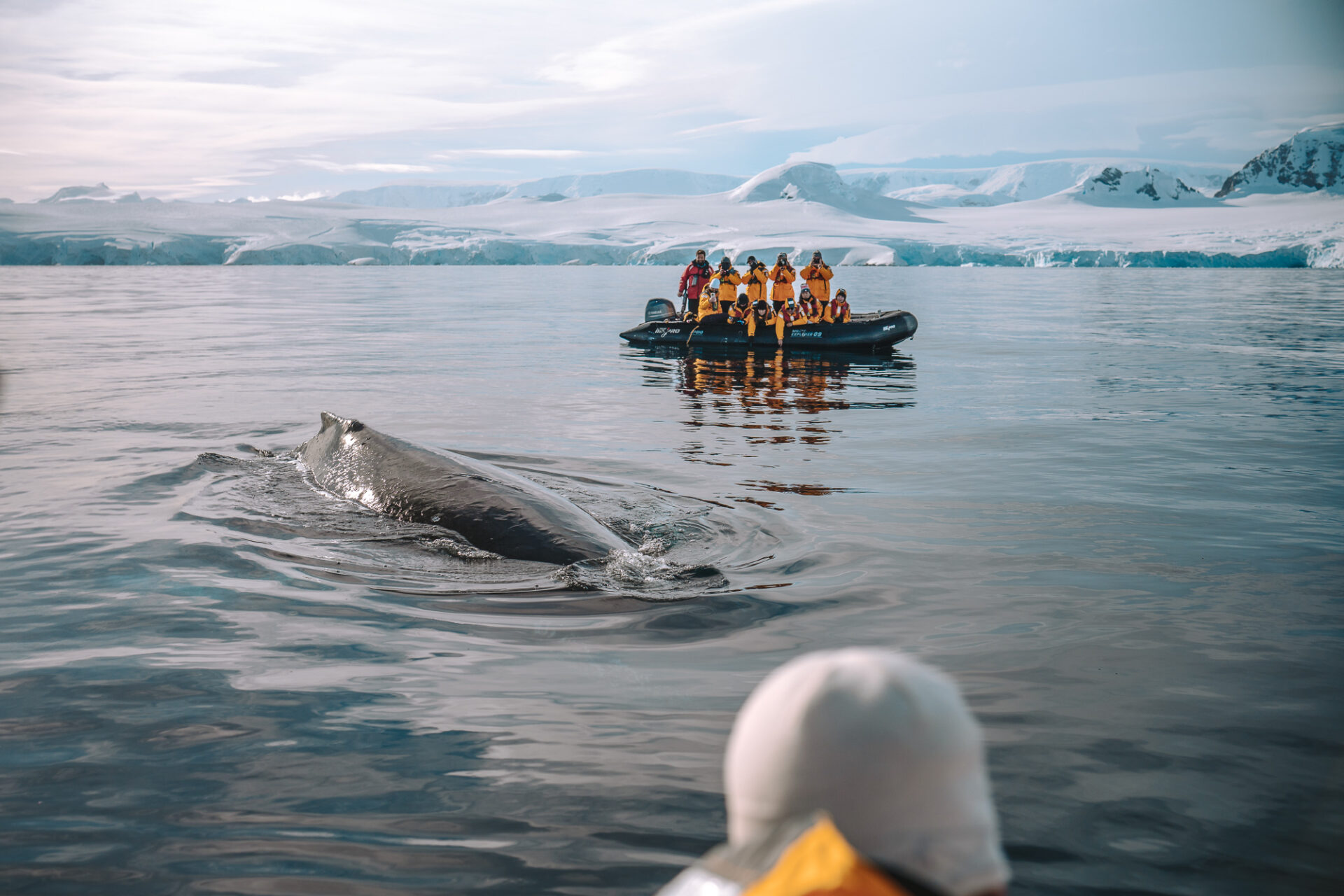


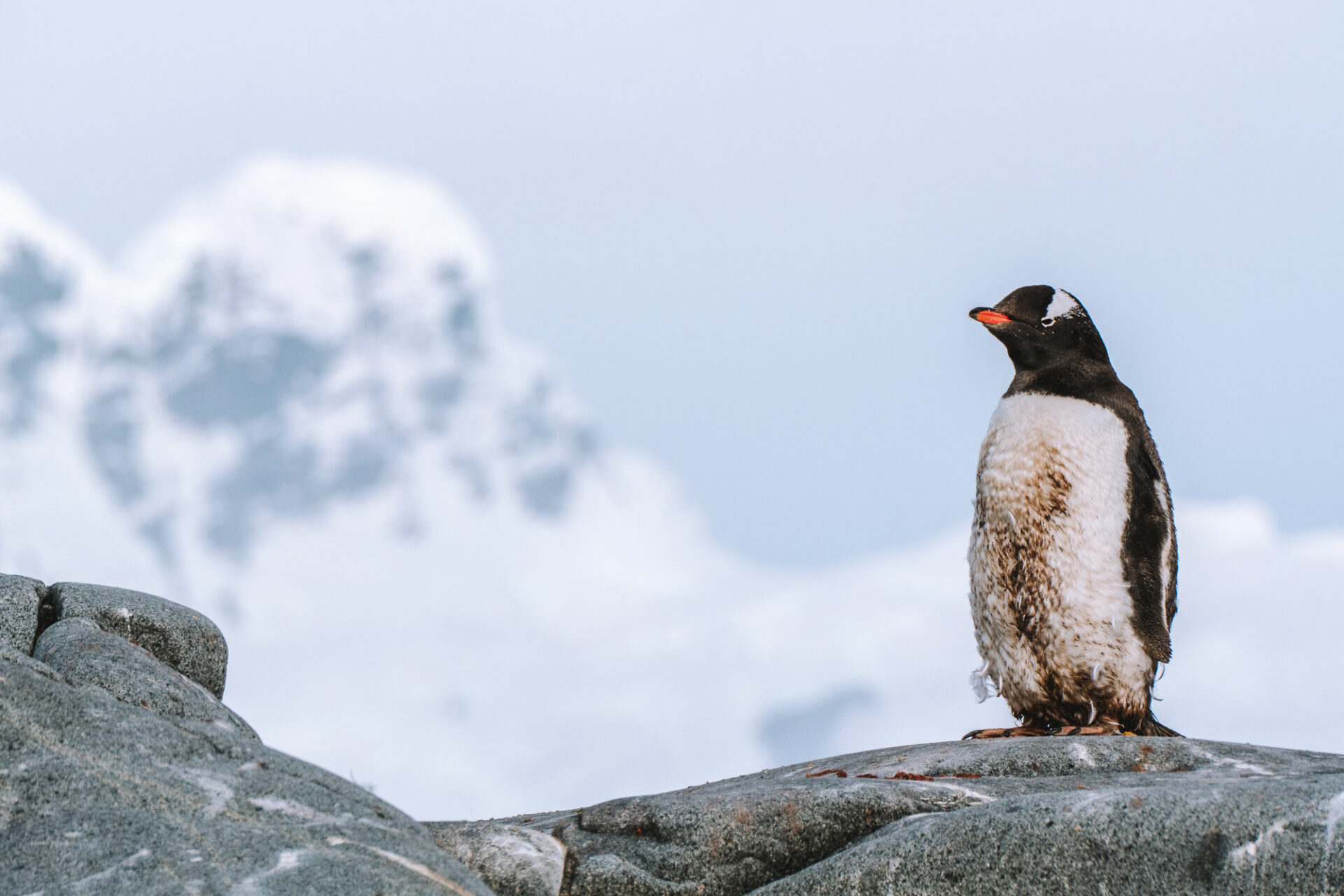
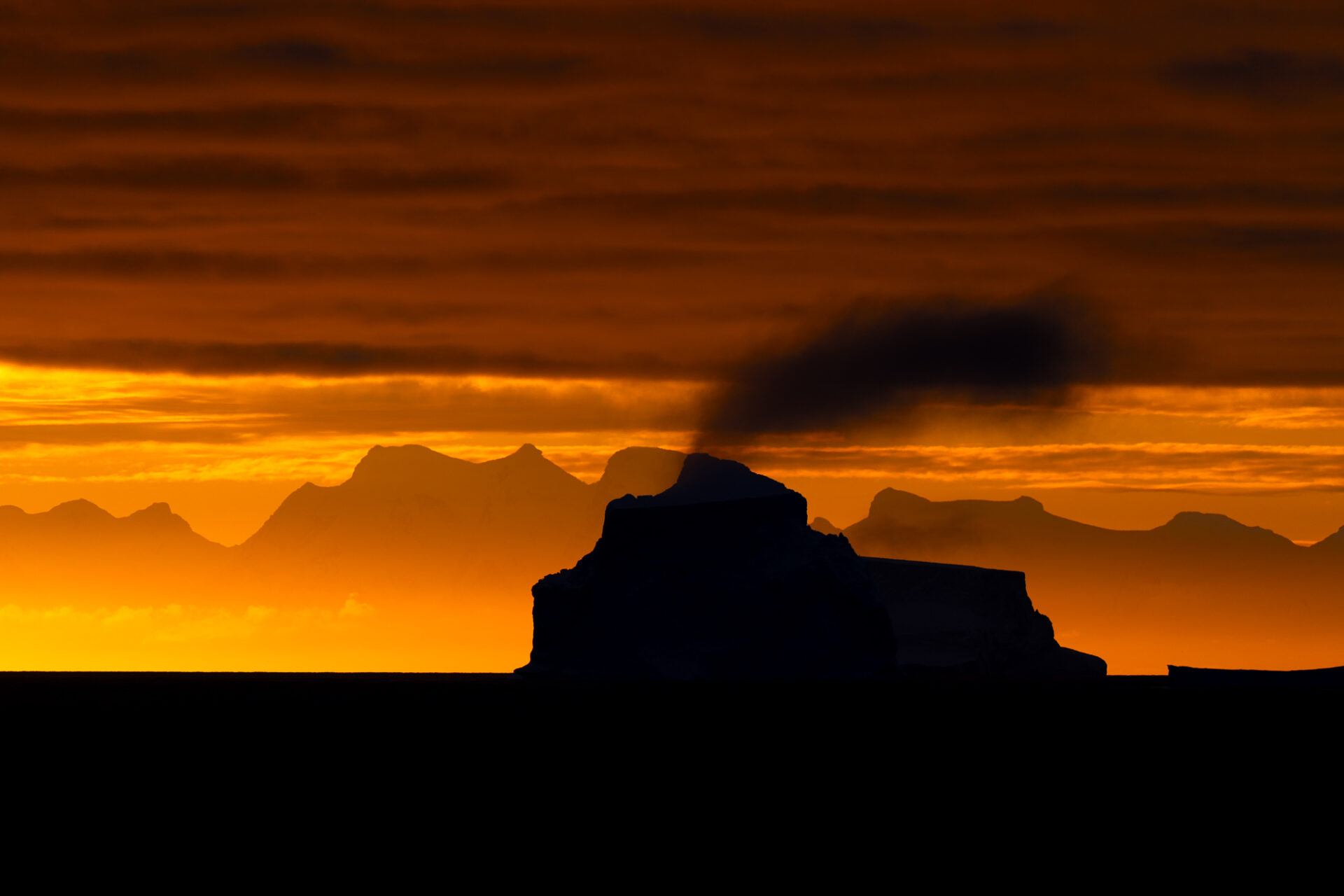
So, When is the Best Time to Visit Antarctica?
Let’s get one thing clear—there is no bad time to visit Antarctica! There’s always something to see, and the “best” time to visit depends on your interests.
Massive icebergs and untouched white landscapes draw in a lot of wildlife photographers, especially at the start of the season. While pack ice may limit your land excursions, it doesn’t stop you from filming or photographing the scene. If you wait a little longer, when more sea ice has melted, you get the chance to capture wildlife, like elephant seal pups being hauled on ice floe.
Love penguins? Do you want to see baby penguins, penguin chicks, adult penguins, King penguins, penguins nesting, or seals hunting penguins? These sights can set the timeline for your itinerary.
As for the whales, peak season is in February and at the start of March. Visit Antarctica then and you’ll likely see them everywhere–blue whales, humpback whales, Minke whales, and maybe even orcas.
Another thing to consider is your travel preferences. Are you worried about rough seas or passing the Drake Passage? Are you willing to splurge on luxury Antarctica cruises, or are you working with a strict budget? If you really don’t want to pass the Drake Passage, there are alternatives like flying over it instead, but it does come with an additional expense.
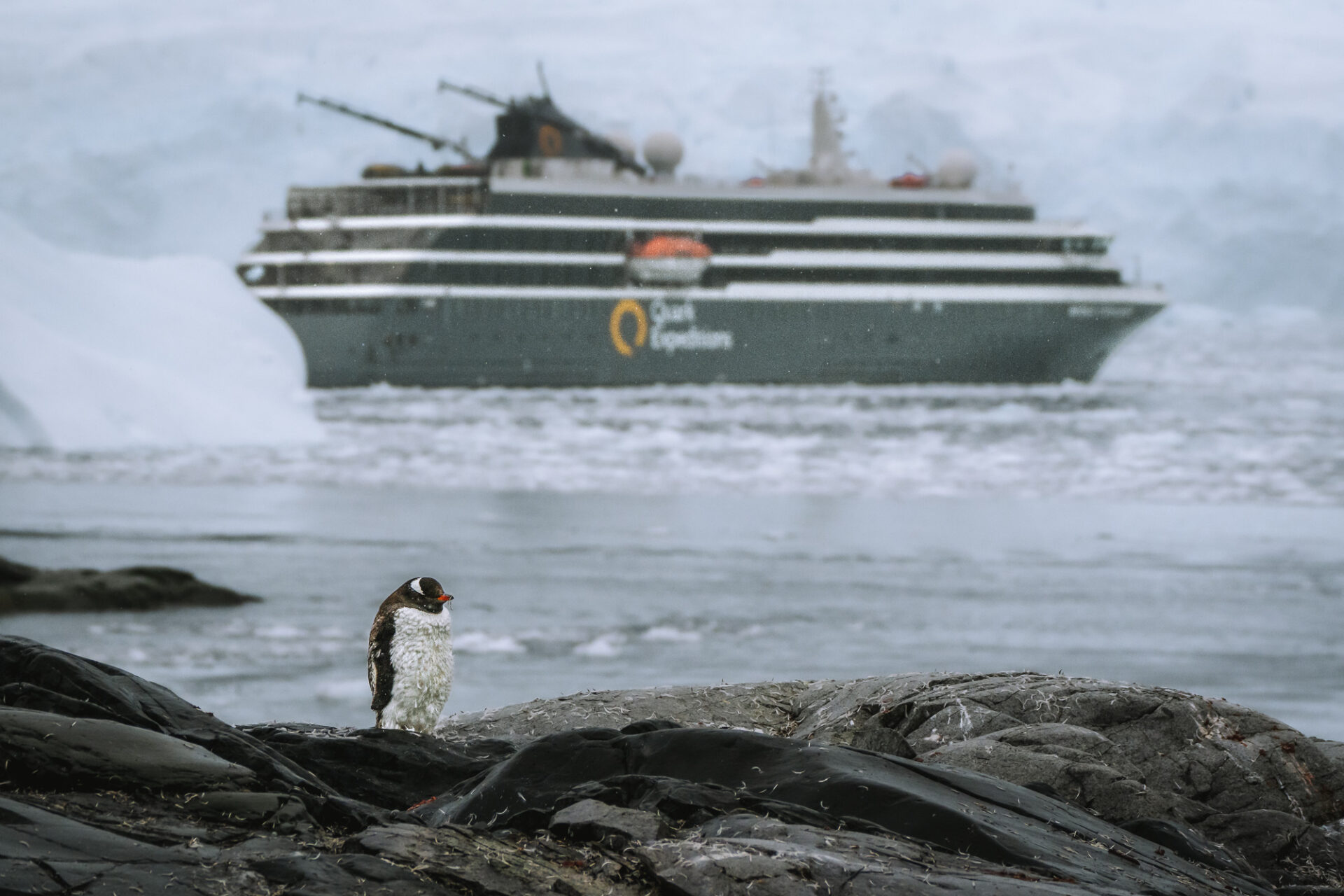
The Bottom Line
If you are still unsure, get some help form the experts! We highly recommend contacting a Trip Planner at Adventure Life – their fantastic staff are well versed in the variety of tour operators, boats, itineraries, and seasonality for Antarctica.
Their planners are perfectly equipped to help you narrow down the options to find the best Antarctica cruise and finally make this dream trip into reality!
Disclaimer: Our trip to Antarctica was made possible courtesy of Adventure Life and Quark Expeditions. As always, all opinions expressed in this article are our own, no matter who is footing the bill.
